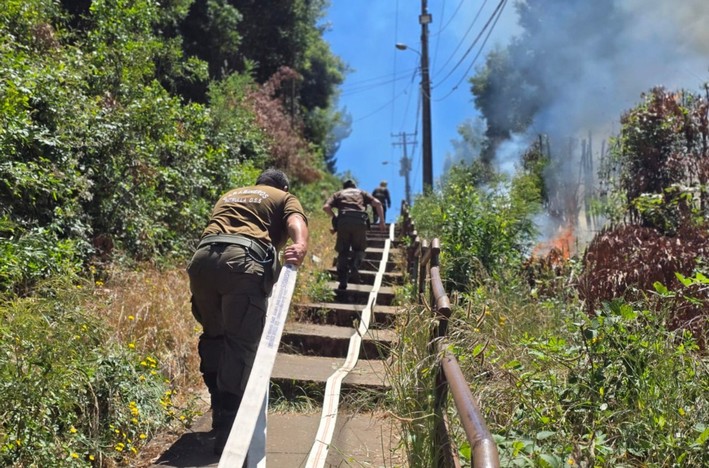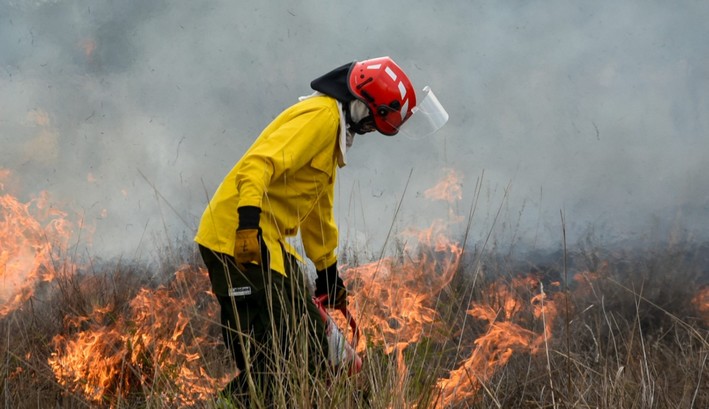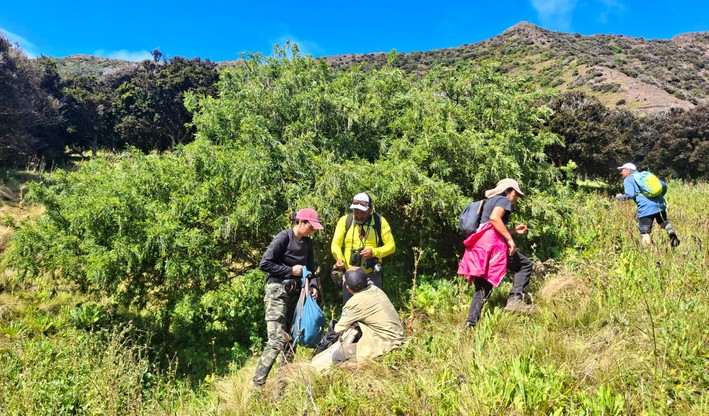René Muñoz (Acoforag): “There cannot be a bottomless pit of land demands without a closing clause”
With the recent closure of the Presidential Commission for Peace and Understanding, one of the most sensitive points that began generating reactions in the business world is the proposal related to the forestry sector. The recommendations, released in April of this year, include the design of a “new framework of understanding” between Mapuche communities and the forestry industry, which has been met with attention but also concern by key players in the sector.
Among them, René Muñoz, manager of the Association of Forestry Contractors (Acoforag), expressed a concern now echoed by industry groups: the absence of a closing clause regarding indigenous communities' land demands.
“What I understand is that forestry companies are willing to discuss certain land requests made by some communities related to their property—which isn’t much, around 10,000 to 15,000 hectares. But what forestry companies argue is that they are open to this as long as it means the end of this ‘bottomless pit,’ so to speak, of endlessly asking for more. Because, ultimately, no one establishes that if 10,000 hectares are handed over, the requests for lands belonging to forestry companies will cease,” Muñoz stated in a conversation with El Líbero.
A growing point of tension
The Commission’s final report estimates institutionalized land demands at 377,334 hectares—requests already submitted that would fall under regular processes through the National Corporation for Indigenous Development (Conadi). This figure has been seen as disproportionate by the forestry sector, considering many of these requests could involve lands currently owned by industry companies.
During the Commission’s operation between 2022 and 2024, there were multiple meetings between its members and forestry companies such as Celulosa Arauco, Forestal Arauco, CMPC, and Corma itself. However, sources familiar with the negotiations claim that by late 2023, the dialogue began deteriorating, shifting from a space for discussion to a sense of imposition by the Executive.
“It was more of an imposition than a negotiation,” off-the-record comments from participants in the talks reveal. In December, disagreements reached a deadlock, forcing Corma to change its representative within the commission. Finally, in March of this year, a wording was agreed upon that partially calmed tensions.
The industry in two phases
The Commission’s proposal involves forestry companies participating in two stages. In the first, the current framework of the Indigenous Law would apply, where companies are expected to provide information and willingness to transfer lands tied to existing requests. In a second phase, once new legislation is developed, the industry would collaborate more broadly in a process of reparation and joint development.
In this context, the Commission proposes creating a working group between the industry and the Executive to review, update, and prioritize properties subject to transition, as well as to survey culturally significant sites claimed by communities. It also suggests establishing flexible legal solutions, such as usufructs or easements, to address spaces with symbolic or historical value that do not necessarily require full ownership transfer.
Endless uncertainty
Despite dialogue efforts, the lack of a clear closing clause remains one of the most contentious issues for the forestry sector. For René Muñoz, the main problem is not the companies’ willingness—which, he claims, has always existed—but the undefined scope and duration of the process.
“It cannot be a process eternally open to more demands, without a termination framework or certainty for those involved,” emphasized the industry leader. In his view, companies can cooperate if guaranteed that handing over specific lands will end future claims, at least regarding their properties.
Call for legal certainty
In its May 3 public statement, the Chilean Wood Corporation (Corma) acknowledged the Commission’s efforts and called for continued contributions to a “lasting peace, with development and territorial justice.” However, the same document subtly reveals the need to understand the proposals and conditions in detail to ensure the viability of the agreement.
The sector is fully aware of the need to advance solutions to the historical conflict affecting the Southern Macrozone. Yet, legal certainty is seen as an essential pillar for achieving real and sustainable private-sector participation.
Just yesterday, an attack occurred in Los Sauces (La Araucanía), at the Napanir property (748). The armed assault completely destroyed all machinery and trucks belonging to EESS Cima, a CMPC contractor.
The victims
Violence does not discriminate in its destruction. René Muñoz details that since 2014, forestry contractors have been victims of 490 attacks, resulting in the destruction of 1,800 pieces of equipment.
“The word ‘terrorism’ appears only once in the entire commission report, and ‘violence’ is mentioned but not labeled as terrorist. That surprises us,” says Muñoz. He questions how the proposed new victim reparations system will function.
“Currently, the victim subsidy fund follows a methodology, is included in the budget under a specific line item, and if that funding runs out, victims must wait in line until it’s replenished. So, if the new system will be the same—requiring equipment owners to lack insurance or invoice no more than 100,000 UF—we believe it makes no sense. Contractors, big or small, suffer the same impact from an attack: their assets and equipment are burned. If we’re considering land restitution for all Mapuche, then let’s also consider subsidies or support for all victims. And here, I think the Commission’s proposal isn’t clear.”
René Muñoz’s words capture the tension between dialogue and the demand for clear rules: “We are open to talking, but not to entering a tunnel with no exit. If no limit is set, the entire system remains exposed to uncertainty.”
Source of information.El Líbero

















